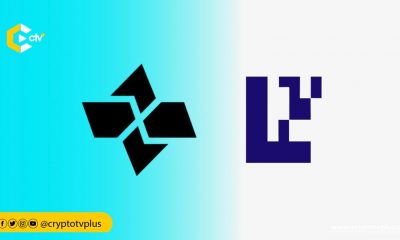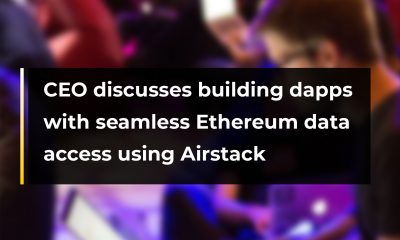FEATURED
Cartesi: Empowering Smart Contract Development with Linux Integration and RISC-V Architecture

Gabriel Barros recently delivered an insightful presentation at EthGlobal on Cartesi, a new technology that aims to revolutionize the way smart contracts are developed and executed on the Ethereum network. Gabriel discussed how Cartesi’s approach to complex computation offers a bridge between traditional development environments and blockchain.
Cartesi is a Layer 2 scaling solution that facilitates the development of decentralized applications (dApps) across multiple blockchains. It is an app-specific rollup protocol with a virtual machine that runs Linux distributions, creating a more comprehensive and broader design space for dApp developers.
Cartesi Rollups offer a modular scaling solution, deployable as L2, L3, or sovereign rollups, while maintaining strong base layer security guarantees.
A paradigm shift in smart contract development
Gabriel explained that Cartesi offers a unique solution for enhancing smart contract development. The Cartesi Virtual Machine allows dApp developers to move beyond the Ethereum Virtual Machine (EVM) and gain access to its full suite of code libraries, programming languages, and open-source tooling they are familiar with.
These includes Python and C#, making it easier for them to create smart contracts. This approach is a significant departure from the Ethereum Virtual Machine (EVM) and its compatibility requirements which is more restricted to Solidity and other Web3 native languages.
Gabriel also mentioned that Cartesi provides an application-specific rollup solution which optimizes performance for a single decentralized application (dApp).
This flexibility allows developers to fine-tune the parameters and validation processes according to the specific requirements of their dApps.
The Power of Linux and RISC-V Integration
Furthermore, the blockchain engineer revealed that Cartesi’s unique selling point is its integration of Linux and the RISC-V architecture.
The Linux architecture is a modular system that acts as the backbone of the Linux operating system and allows its users to customize and configure the system to meet their specific needs.
RISC-V is an open standard instruction set architecture based on established RISC principles. It is unique because it is a common, free, open-source instruction set architecture (ISA) to which software can be ported, hardware can be developed, and processors can be built to support it.
RISC-V is designed to be scalable and flexible, allowing it to be used in a wide range of applications, and is supported by a growing ecosystem of companies, organizations, and individuals.
By bringing RISC-V to the blockchain world, Gabriel said that Cartesi allows for a deterministic machine emulator with the capabilities of running Linux. This means smart contracts can now perform more advanced calculations.
He added that while trying to run Linux system on Ethereum is not feasible due to the high computational cost, Cartesi’s implementation handles Linux efficiently, making it a game-changer for blockchain-based applications.
Empowering Developers and Ensuring Security
Gabriel also noted that the Cartesi provides developers with the freedom to import libraries, frameworks, and even machine learning models, making it an ideal platform for building diverse and powerful decentralized applications.
This makes it possible to have AI-based products that seamlessly combine the efficiency of the blockchain and AI infrastructure.
Beyond scalability and versatility, Gabriel noted that Cartesi is also built for security.
The use of Cartesi’s deterministic execution environment enables auditability, which is critical for many decentralized applications.
He highlighted how Cartesi has been effectively applied in real-world scenarios to authenticate the output of extensive language models, alleviating concerns about the dominance of major corporations over these models.
Additionally, Gabriel demonstrated another use case where Cartesi can be implemented to enhance the dependability of fingerprint-based access control systems, mitigating instances of fraud and spoofing.
Read also; Fuel Labs: the importance of Predicates and Multisigs

























Pingback: DevRel Craig Johnson speaks on how to deploy dapps on Aleo protocol | CryptoTvplus - The Leading Blockchain Media Firm